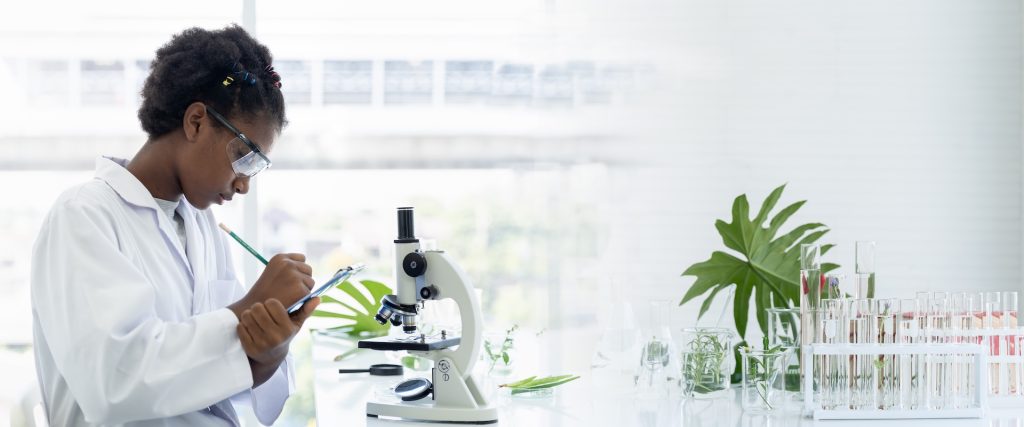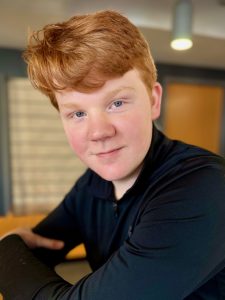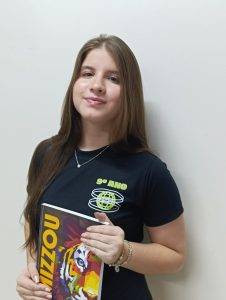Mizzou Academy Science Team Hosts Inaugural Science Fair
Posted in: News
Ninth-grade student Britney Suy spent several days analyzing and photographing plants in the hills of California. She presented her findings and an extensive plant photography portfolio at our inaugural science fair on May 1, 2025, organized by Assistant Professors Ericca Thornhill and Sherry Denney, co-sponsors of our Mizzou Academy Science Team (MAST). However, Thornhill shares that it was “our MAST students [who] first asked for a science fair!”
In addition to Britney, William Fleury and Lorena Freitas also presented projects at the Science Fair. Their topics were the physics of figure skating and the way bilingualism impacts brain circuitry, respectively. The presentations were multilayered and diverse, and they included video demonstrations, slideshows, photographs, colorful graphics, and mathematical models. The three presenters were supported by their peers, who logged in from around the globe to learn with their MAST classmates over Zoom.
“Science is all around us, and the science fair gave us a way to share it and our love for science with each other,” says Thornhill, who loved how the Science Fair celebrated “the joy of discovery!” She saw that joy on her students’ faces as they leaned into the screen to follow along with Will as he explained complex physics equations related to figure skating. Will, who lives in Central Missouri, is an accomplished figure skater.

“As a figure skater for twelve years, I wanted to understand and apply the principles of motion to my sport,” says Will. “Force, momentum, and inertia are crucial in figure skating. When skating, my thoughts travel much faster than my skates down the ice. Things are usually happening so fast that I don’t always have time to focus on the actual physics of skating. So, when planning for the science fair, it was natural to take this time and learn more about the actual science of skating.”
He shares that he “enjoyed many aspects of the investigation, but most of all, I enjoyed learning how to manipulate the equations to solve for the unknowns, like the moment of inertia.” Will used a video to present his findings, allowing him to learn more about Vernier Video Analysis, which converts video footage from pixels to mathematical measurements.
Will is grateful to Instructional Specialist Roger Bergman, who was an advisor on this project. Will said, “Mr. Bergman guided me through finding a practical investigation and experiment,” which enabled him to connect his sport to the mathematics of science. Lisa Bax, Technology Resource Coordinator, and Virginia Pohelman, Instructional Specialist, also served as advisors for the Science Fair.
Denney beams when she talks about the Science Fair and says, “It is exactly what Professor Thornhill and I hoped for when planning for the fair. During the presentations, the audience was inspired, awed, intrigued, and motivated by their fellow team members. These kids were brilliant, and their work was heartfelt and meaningful. I already can’t wait for next year’s science fair.”

Among these brilliant students was Lorena Freitas, who studies with us through our Dual Diploma program at Colegio Bertoni (Foz do Iguaçu, PR, Brazil). Lorena’s project showcased her love of neuroscience while also celebrating multilingualism. Poehlman, her advisor on this project, shared that Lorena “is full of the desire to learn…her learning was not just coursework but a desire for lifelong learning.” Lorena is bilingual; she speaks Portuguese and English. Her project encouraged many in attendance to continue their world language studies, including our Executive Director, Dr. Kathryn Fishman-Weaver, who chatted with Lorena in Portuguese.
Lorena says that the most fulfilling part of the fair was “the enthusiasm that comes along with something that you are interested in.” She saw this same enthusiasm in her peers’ different approaches to their projects. “Science can be learned or taught in several ways, and it also can be connected with one’s inclinations, one’s inner self.”
Additionally, she adds that the public aspect gave all the presenters opportunities to develop research and public speaking skills. MAST brings students together from across the globe to celebrate science, and Lorena says the conversations she and her peers get to have with others of different cultures include thoughtful questions and insights that help us all learn together.
Dr. Fishman-Weaver was proud to attend the Science Fair and remarked she was particularly struck by how much there is to learn about each student through the topic they chose. “Science asks us to answer big questions. There are many important questions about the natural world. The questions you choose to chase matter. They tell us what you care about and who you are. Today, I got to learn with athletes, photographers, and orators. I also got to learn with three promising scientists. Congratulations on your work. Keep chasing those big questions.”
The Science Fair ended as each MAST meeting does, with Dr. Denney directing the group to turn on their microphones and call out over Zoom: Go Science!